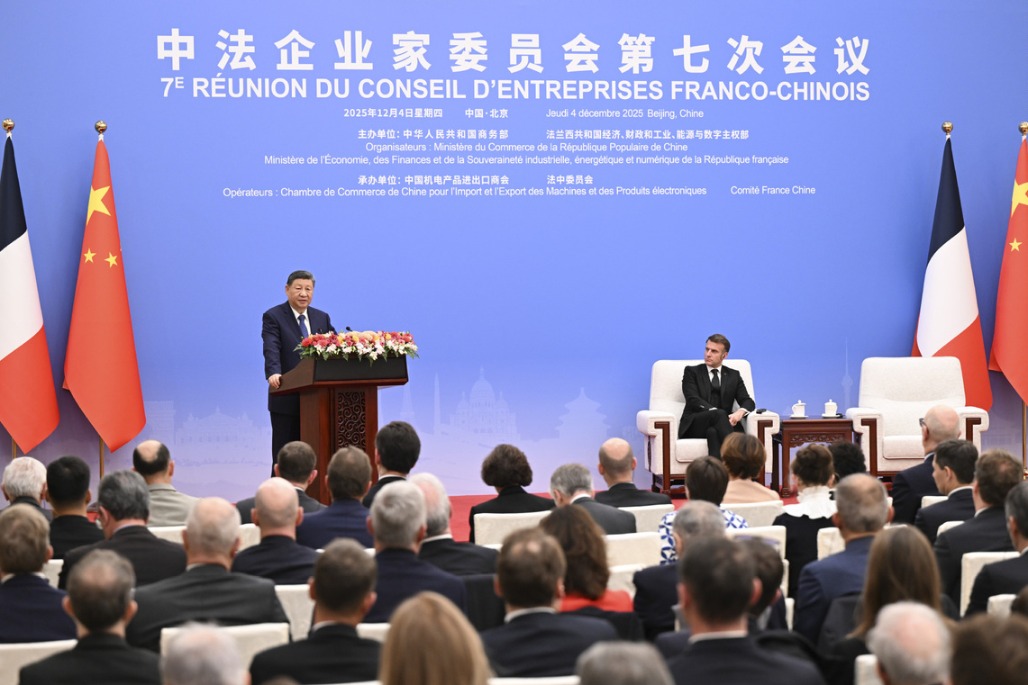Social financing back to life on stimulus moves
By Zhong Zhengsheng, Zhang Lu and Chang Yixin | CHINA DAILY | Updated: 2022-06-27 09:52

China's total social financing rebounded strongly in May. The dawn is about to break in terms of credit stabilization as the domestic COVID-19 situation has begun to ease, the country is promoting the resumption of work and production in many places, and financial institutions are strengthening support for the real economy.
Newly added total social financing, or incremental TSF, was 2.79 trillion yuan ($417.56 billion) in May, 837.8 billion yuan more than that in the same period of the previous year. The amount was the second-highest recorded for the period over the years. Outstanding TSF rose 10.5 percent year-on-year, up 0.3 percentage points from a month earlier.
In May, the structure of TSF growth was relatively balanced in terms of asset classes. The growth of credit financing was 365.9 billion yuan more than the previous month. The increase of direct financing and that of off-balance-sheet financing was 444.3 billion yuan more and 81 billion yuan more, respectively.
The strong performance of TSF in May mainly benefited from the following factors.
First, according to statistical calculations of TSF, newly added on-balance-sheet credit was 1.82 trillion yuan, 0.39 trillion yuan more than the previous year. It is likely that the accelerated approval of some project loans, which were previously delayed due to the impact of the pandemic, led to the large growth in on-balance-sheet credit in May as work and production have gradually resumed.
Second, the accelerated issuance of government bonds led to an increase in the year-on-year growth of direct financing, creating fairly strong support for TSF in May.
Net financing via government bonds reached 1.06 trillion yuan last month, with an increase that was 389.9 billion yuan more than that of May of the previous year. The Ministry of Finance repeatedly said issuances of the majority of new local government special bonds should be completed by the end of June, which spurred the acceleration of government bond issuances.
Third, reductions in off-balance-sheet entrusted loans and trust loans slowed, bolstering TSF in May to a certain extent. Entrusted loans declined by 13.2 billion yuan and trust loans by 61.9 billion yuan. The total reduction was 95.2 billion yuan less than that of the same period of 2021.
Under increased economic pressure since the beginning of the year, financial regulators' implementation efforts may be marginally loosened on a periodic basis. From January to May, the total reduction in off-balance-sheet entrusted loans and trust loans was 426.7 billion yuan lower year-on-year, giving support to TSF.
New on-balance-sheet and off-balance-sheet bill financing was 606.1 billion yuan last month, much larger than that of May of the previous year and the average annual amount seen from 2017 to 2021.
China is increasing leverage to further intensify efforts to assist enterprises in alleviating financing and fundraising difficulties.
Last month, new yuan loans reached 1.89 trillion yuan, up 392 billion yuan year-on-year. Companies used short-term loans and bills to increase financial leverage. The growth of medium- and long-term corporate loans and the growth of household loans, although less than the same period last year, marginally improved versus April.
Household credit was still weak but slightly recovered due to the gradual easing of COVID-19 prevention and control measures, downward mortgage rates and the impact of policies aimed at stimulating consumption.
The year-on-year growth of household loans in May dropped 334.5 billion yuan, better than the figure in April, which fell 745.3 billion yuan. The improvement may be due to three positive changes.
First, the better anti-COVID-19 situation reduced the negative impact on consumption and immediate incomes of residents to some extent.
Second, apart from the loosening of policy restrictions on real estate buying and lending, as well as the implementation of housing policies according to local conditions in each city, China also made positive adjustments to financial policies related to housing. The People's Bank of China, the nation's central bank, said in May it will allow commercial banks to cut the lower limit of interest rates on home loans by 20 basis points for purchases of first homes and guided banks to lower the five-year loan prime rate by 15 basis points. These moves will drive further reduction in mortgage rates and stimulate demand for mortgages.
Third, China has launched a series of policies to stimulate consumption. For instance, the central government will halve the purchase tax levied on passenger vehicles priced at no more than 300,000 yuan and with 2.0-liter or smaller engines. Local governments in various regions also announced subsidies for new energy vehicles. This will likely help boost growth in consumer loans. However, as people generally still lack confidence in future incomes and home prices, many are not willing to become highly leveraged.
The PBOC promoted credit expansion in May, which is helpful for the recovery of corporate lending. After establishing a relending facility worth 200 billion yuan in April to boost scientific and technological innovation, the PBOC announced in May that it had increased the targeted relending quota for the coal industry by another 100 billion yuan to support the clean and efficient use of the commodity. The central bank also launched a 100 billion yuan relending facility to support the transport, logistics and storage sectors.
The Chinese authorities have also pledged to increase credit issuance and enhance financial support for key businesses and fields, according to a meeting jointly held by the PBOC and the China Banking and Insurance Regulatory Commission on May 24.
Currently, the problem of weak demand for medium- and long-term loans has not yet been resolved. However, with the gradual recovery of China's economic fundamentals and efforts made by the PBOC to promote credit expansion, the recovery of medium- and long-term corporate loans, although still lagging, is something to anticipate.
At the end of May, M2, a broad measure of money supply that covers cash in circulation and all deposits, increased by 11.1 percent year-on-year, up 0.6 percentage points from a month earlier. M1, China's narrow measure of money supply, rose by 4.6 percent year-on-year, decelerating by 0.5 percentage points from a month earlier.
The widening gap between the year-on-year growth rate of M2 and M1 last month manifested companies' lack of confidence in production and operations in the future.
Household deposits increased by 739.3 billion yuan in May, which was 632.1 billion yuan more than the same period of last year and 504.8 billion yuan more than the average amount during the same period from 2017 to 2021. It shows that deposit holders have insufficient willingness to consume and have increased their level of rainy-day savings.
In the first five months, deposits with nonbank financial institutions grew by about 1.5 trillion yuan, 857.9 billion yuan higher than the average amount in the same period from 2017 to 2020, which means idle funds, or money that has not been invested and is, therefore, not earning interest or investment income, still exist in the financial market.
Companies' short-term cash flows are weak. The reasons are probably as follows: companies' operating cash inflows are weak, there are weak expectations regarding future development, and real estate sales are still at a low point.
However, China has ramped up policies to defer tax payments for micro, small and medium-sized enterprises, which help them maintain a relatively healthy balance sheet. As the economy is recovering step by step, and freight and logistics are gradually stabilizing, we hope to see improvements in companies' operating cash flows.
The writers are Zhong Zhengsheng, chief economist at Ping An Securities Co Ltd and director of the China Chief Economist Forum, and Zhang Lu and Chang Yixin, analysts at Ping An Securities.
The views don't necessarily reflect those of China Daily.
























